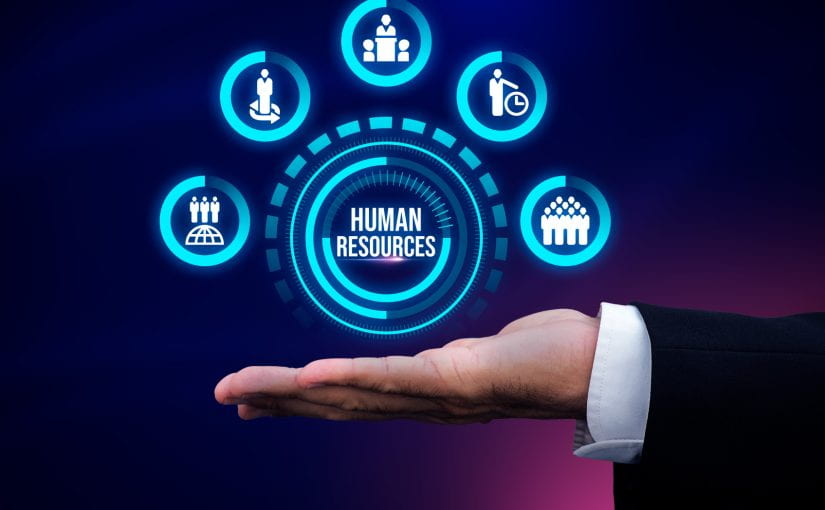From Manual to Digital: How HRMS Systems Transform HR Management
In today’s fast-evolving business landscape, Human Resources (HR) departments are transitioning from traditional manual processes to more advanced, digital solutions. The rise of Human Resource Management Systems (HRMS) has revolutionized the way companies manage their workforce. These systems have become a cornerstone for organizations aiming to streamline operations, enhance employee experiences, and make more data-driven decisions. This blog explores the transformation from manual HR processes to HRMS systems, shedding light on how this shift is reshaping HR management.
The Traditional HR Management Approach
Before the advent of digital technology, HR departments relied heavily on manual processes. From paper-based record-keeping to spreadsheets tracking employee data, every aspect of HR management was labor-intensive and prone to errors. Routine tasks such as payroll processing, attendance tracking, recruitment, and performance management required significant time and resources.
Manual systems not only consumed valuable time but also lacked integration. Information was often scattered across different files, making it difficult for HR managers to get a holistic view of their workforce. Furthermore, the risk of human error was high, and with limited reporting capabilities, data-driven decision-making was challenging. These inefficiencies highlighted the need for a more streamlined and automated solution.
The Rise of Digital HR Solutions
The digital revolution began to change the face of HR management. As businesses increasingly adopted technology to improve operations, HR systems evolved to meet the growing demands of modern organizations. Enter Human Resource Management Systems (HRMS), comprehensive digital platforms designed to automate and streamline HR processes.
HRMS systems integrate various HR functions such as recruitment, onboarding, payroll, attendance, performance management, and compliance tracking into a single platform. This centralization offers HR managers a unified, real-time view of the workforce, allowing them to make quicker, more informed decisions. HRMS platforms are also designed to reduce the administrative burden on HR professionals, giving them more time to focus on strategic initiatives like talent development and employee engagement.
Key Features of an HRMS System
An HRMS system brings a host of features that transform traditional HR management. Here are some key features that distinguish HRMS platforms from manual systems:
- Automated Payroll Processing: HRMS automates payroll calculations, tax withholdings, and deductions, ensuring accuracy and compliance with labor laws.
- Attendance and Leave Management: Employees can clock in and out digitally, and HR can monitor attendance trends, reduce absenteeism, and manage leave requests seamlessly.
- Recruitment and Onboarding: HRMS simplifies the recruitment process, allowing HR to post job openings, track applicants, and streamline onboarding, all from one interface.
- Performance Management: HRMS offers tools for setting employee goals, conducting performance reviews, and providing feedback, creating a structured approach to talent management.
- Compliance and Reporting: HRMS helps businesses stay compliant with labor laws and generate reports for audits and decision-making purposes.
The Impact of HRMS on HR Management
The implementation of HRMS has far-reaching effects on HR management, drastically improving efficiency, accuracy, and employee satisfaction. Here’s how HRMS systems are transforming HR departments worldwide:
1. Increased Efficiency
One of the most significant benefits of HRMS is the automation of routine tasks. Processes that once took hours or even days can now be completed in minutes. For instance, payroll processing, which previously required manual input, can be automated with precision. Timesheet approvals, benefits administration, and performance reviews are streamlined, allowing HR professionals to focus on high-value tasks rather than administrative chores.
2. Data-Driven Decision Making
HRMS platforms collect and store vast amounts of employee data, which can be analyzed to make informed decisions. HR teams can use this data to identify trends such as high turnover rates, absenteeism patterns, or areas where additional training is needed. With detailed reporting tools, HRMS systems empower HR managers to make data-backed decisions that align with company goals and improve overall productivity.
3. Improved Employee Experience
HRMS enhances the employee experience by offering self-service options. Employees can access their personal information, request leave, check their attendance records, and update their details without having to rely on HR personnel. This autonomy not only improves employee satisfaction but also reduces the administrative burden on HR teams.
Additionally, performance management features in HRMS enable managers to provide real-time feedback, set clear goals, and track employee progress. This continuous performance tracking helps employees stay motivated and engaged, fostering a positive work environment.
4. Enhanced Compliance and Security
Staying compliant with labor laws and regulations is a critical function of HR departments. HRMS ensures that all data is stored securely and that payroll, benefits, and employee classifications adhere to legal standards. Furthermore, HRMS platforms generate audit trails, making it easier for companies to demonstrate compliance during audits or inspections.
With robust security features, HRMS systems also protect sensitive employee data. Role-based access control ensures that only authorized personnel can view or modify confidential information, reducing the risk of data breaches.
5. Scalability and Adaptability
As businesses grow, so do their HR needs. HRMS systems are scalable and can be easily adapted to meet the evolving needs of an organization. Whether it’s adding new employees, integrating with other business systems, or adapting to new compliance requirements, HRMS platforms are designed to grow with the company.
This flexibility is especially beneficial for businesses experiencing rapid expansion or operating across multiple locations. HRMS systems can manage large, geographically dispersed workforces, ensuring that HR processes remain consistent and efficient.
Transitioning from Manual to Digital HR Management
Switching from a manual HR system to an HRMS can seem daunting, especially for organizations accustomed to traditional processes. However, the benefits far outweigh the initial investment and challenges. Here’s a step-by-step guide to making the transition smoother:
1. Assess Your HR Needs
Before selecting an HRMS platform, it’s essential to evaluate your current HR processes. Identify pain points such as time-consuming tasks, error-prone processes, or areas where compliance is a concern. This assessment will help you choose an HRMS that addresses your specific needs.
2. Choose the Right HRMS Platform
There are numerous HRMS platforms available, each offering different features. When choosing a system, consider factors such as ease of use, scalability, integration capabilities, and customer support. It’s also essential to ensure that the platform can meet both your current and future HR needs.
3. Train HR Staff and Employees
Once an HRMS is selected, training is crucial to ensure a smooth transition. Both HR personnel and employees need to understand how to use the system effectively. Many HRMS vendors offer training sessions and ongoing support to help teams get up to speed.
4. Data Migration and Implementation
Migrating employee data from a manual system to an HRMS can be a complex task. It’s essential to work with IT specialists or the HRMS vendor to ensure that all data is transferred accurately and securely. Implementing the system may take time, but the result will be a more efficient and organized HR department.
5. Monitor and Optimize
After implementing an HRMS, it’s important to monitor its performance and make adjustments as needed. HR teams should regularly assess whether the system is meeting their needs and identify areas where improvements can be made. Optimizing the system over time ensures that it continues to deliver maximum value.
The Future of HR Management
As technology continues to advance, HRMS systems are expected to become even more sophisticated. Artificial intelligence (AI), machine learning, and predictive analytics are already making their way into HRMS platforms, offering even greater insights and automation capabilities.
For example, AI-powered chatbots can handle employee queries, freeing up HR personnel for more complex tasks. Predictive analytics can help HR managers forecast employee turnover, identify high-potential employees, and even improve hiring decisions. The integration of these advanced technologies will further transform HR management, making it more strategic and data-driven.
Conclusion
The shift from manual to digital HR management is not just a trend—it’s a necessity in today’s fast-paced business world. HRMS systems offer an efficient, scalable, and data-driven approach to managing a workforce, freeing HR professionals from mundane tasks and allowing them to focus on strategic initiatives. As more organizations embrace digital transformation, HRMS platforms will continue to play a pivotal role in shaping the future of HR management.










